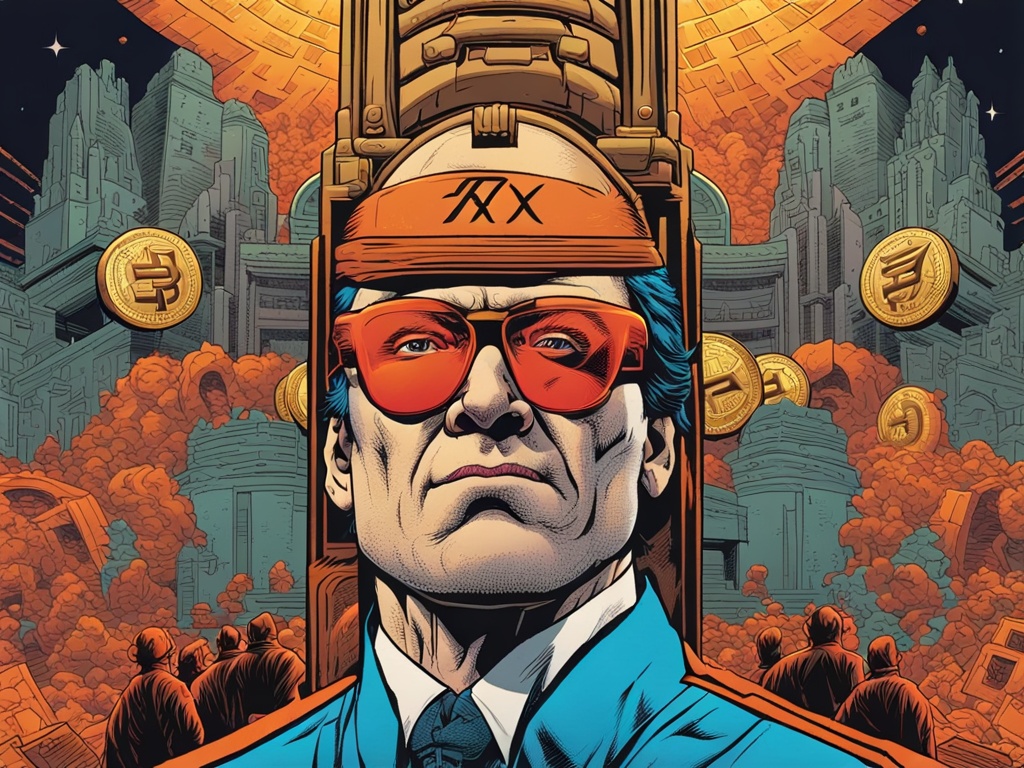Exploring Ethereum’s Evolution: Insights from James Strudwick 🌐
As Ethereum heads toward substantial enhancements with upcoming upgrades such as Pectra and Verge, James Strudwick, the Executive Director of the Starknet Foundation, discusses the implications these innovations hold for the network’s future. This year, Ethereum’s infrastructure aims to facilitate lower fees, enhance scalability, and improve user experiences, alongside the integration of Layer 2 solutions. In this analysis, you will find a comprehensive overview of how these changes will shape Ethereum’s ecosystem and serve its growing user base.
Unveiling Ethereum’s Future Upgrades 🚀
The transition of Ethereum towards incorporating zk-STARKs (Zero-Knowledge Scalable Transparent Arguments of Knowledge) into both its consensus mechanism (Proof of Stake) and the Ethereum Virtual Machine (EVM) positions it for significant improvements. With the introduction of Kakarot, a cutting-edge zkEVM developed in Cairo, the platform is set to achieve superior compatibility and performance. These advancements possess the potential to deliver real-time scalability, resulting in diminished costs and expedited transaction processing times for users, thus enhancing network efficiency.
By embedding advanced zk-STARK technology directly into Ethereum, notable improvements are guaranteed for Ethereum users, offering them a more robust and user-friendly platform. This year’s upgrades are crucial for accommodating the demands of a diverse and expanding global user base, representing a remarkable step forward in Ethereum’s evolution towards a robust and inclusive environment fit for mass adoption.
Enhancing Layer 2 Solutions: The Role of Upcoming Upgrades ⚙️
The impending upgrades bring a promising future for Layer 2 (L2) solutions. These enhancements are expected to revolutionize L2 accessibility and affordability. By expanding data availability through Pectra’s PeerDAS system, Ethereum enables Starknet and other L2 solutions to function at substantially reduced costs. As a result, the user experience on Starknet could see transaction fees diminish to seemingly negligible levels.
Moreover, integrating STARKs into Ethereum’s core components—an objective of the Verge upgrade—is anticipated to expedite data verification processes, thus bolstering L2 scalability. Rather than diminishing the necessity for L2 solutions, these upgrades will empower them, enhancing their capabilities to support increased transaction volumes and cater to more sophisticated applications.
Addressing Criticism Surrounding Layer 2 Solutions ⚖️
A common critique of Layer 2 solutions is that they might compromise Ethereum’s revenue by transferring transactions off the main chain. Some individuals even label L2s as “parasitic,” failing to recognize their integral role in Ethereum’s growth. Strudwick counters such views, emphasizing that Layer 2 solutions are fundamental to Ethereum’s roadmap, delivering transaction fees that are nearly negligible without excessive charges.
Through projects empowered by Cairo, including Madara, Dojo/Katana, and StarkEx, Starknet contributes to substantial scalability—verifying Ethereum’s blockspace usage effectively. This perspective encourages a broader understanding of Ethereum’s value, moving beyond direct revenue to encompass user experience and accessibility, which are vital for creating a thriving ecosystem.
Decentralization versus Scaling: Striking a Balance ⚖️
The ongoing discussion about whether L2 scaling undermines Ethereum’s decentralized identity is notable. Strudwick believes that L2 scaling does not threaten Ethereum’s core principles—instead, it enhances them. Starknet, built on Cairo, embraces privacy features while prioritizing individual choice regarding data disclosure. By offering users the capacity to manage their information securely and flexibly, Starknet aligns closely with the ethos of decentralization.
Challenges Ahead for Layer 2 Solutions 🔍
Despite the positive outlook, certain challenges remain for Layer 2 solutions in the coming years. Ensuring these technologies remain accessible to a broader audience is critical. This involves creating smooth onboarding processes for new users and facilitating easy interaction with L2 networks using everyday devices. Improvements in signature verification and user-friendly tools will be essential to bridging existing gaps.
Additionally, providing developers with the necessary support and resources is vital for fostering innovation. Initiatives led by the Starknet Foundation are focused on enabling developers to navigate and harness emerging technologies, ensuring that L2 ecosystems become sources of real-world impact and opportunity.
Hot Take: The Road Ahead for Ethereum and Layer 2 Solutions 🌈
As Ethereum embarks on its journey through transformative upgrades this year, continued collaboration among stakeholders will be crucial to unlocking its full potential. The interconnectedness of Layer 2 solutions and the main Ethereum network presents a dynamic future, fostering development opportunities and enhancing user experiences. With visionary leadership and technological advancements, Ethereum is on the precipice of significant innovations that may reshape its landscape and support its mission of decentralization and accessibility.
In summary, Ethereum’s enhancements in scalability and user-friendliness signify a promising direction for the platform, setting the stage for a more robust ecosystem aptly equipped for wider adoption.





 By
By
 By
By


 By
By
 By
By